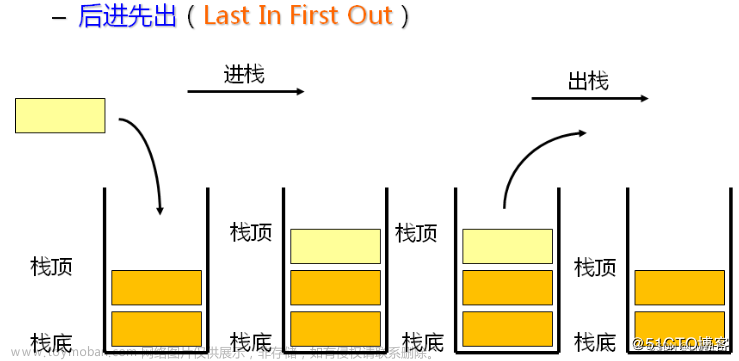
学习本章节必须具备 单链表的前置知识,
建议提前学习:点击链接学习:单链表各种功能函数 细节 详解
本章节是学习用 单链表模拟队列
1. 单链表实现队列 思路如下
队列:只允许在一端进行插入数据操作,在另一端进行删除数据操作的特殊线性表,队列具有先 进先出FIFO(First In First Out) 入队列:进行插入操作的一端称为队尾 出队列:进行删除操作的一 端称为队头
1.1 使用 数组 还是 链表 模拟 队列 结构?
因为需要 模拟队列 先进先出的 特性:队头 只能出,队尾 只能进
若 使用 数组模拟,每次 pop 队头操作,就需要 全部元素向前面移动,时间复杂度为 O(n)
综上,因为需要 考虑位置变化,选择 链表 实现 队列 较优
1.2. 需要使用 什么类型的 链表模拟队列?
单向
带头 / 不带头 都可以 :因为哨兵位主要用于 双向链表 找尾 ,为了方便删除,这里差别不大
不循环
我们下面实现的 是 单向不带头不循环链表
实际上,单向或双向,循环或不循环,带头或不带头 完全取决于 你自己要实现一个功能的需求,不是说 一定要固定使用 哪一个套 ,需要灵活选择使用
1.3. 单向链表 实现队列 的链表节点结构体创建:
typedef int QDataType;
typedef struct QueueNode
{
QDataType value; // 节点数据
struct QueueNode* next; // 指向下一个节点
}QNode;1.4. 考虑效率,创建 头尾指针结构体
因为 队列需要:队头 push,队尾 pop
涉及到对 链表 的 尾部操作必须意识到:需要先进行 找尾操作,时间复杂度为 O(n)
方案:因为涉及头尾频繁操作:可以 直接 同时定义 头指针 phead 和 尾指针 ptail
技巧:同类型的变量可以封装成一个结构体
因为 phead 和 ptail 是可以不断变化的,每个相关函数都需要同时传递 phead 和 ptail 两个变量
则可以将多个同类型的变量 封装成 一个结构体,方便操作
这样,传递变量时 直接传递一个 结构体的指针就行了
typedef struct Queue
{
QNode* phead;
QNode* ptail;
}Queue;// 区别:减少了传递变量的数量,利于协助开发
// void QueuePush(QNode* phead, QNode* ptail);
void QueuePush(Queue* pq);
// void QueuePop(QNode* phead, QNode* ptail);
void QueuePop(Queue* pq);1.5. Push / Pop :入队 和 出队操作
Push 在队尾入队,Pop 在队头出队
void QueuePop(Queue* pq)
{
assert(pq);
// pop 的删除操作 需要分类讨论:链表节点个数为 0、为 1、为 两个以上
// 为 0 :直接判空,退出操作:phead == ptail == NULL
assert(pq->phead); // 头节点为空 就一定代表为空了
// 为 1:phead == ptail 但是 phead != NULL 的情况:即一定指向一个节点
if (pq->phead == pq->ptail && pq->phead != NULL) {
free(pq->phead);
pq->phead = pq->ptail = NULL;
}
else // 为 两个以上:先记录第二个节点,free 掉头节点,更新头节点
{
QNode* tmp = pq->phead->next;
free(pq->phead);
pq->phead = tmp;
}
}为什么 ” 头节点为空 或 尾节点为空 就一定代表链表为空了 “?

1.6. 观察上面代码:有需要 判断链表节点数量的 需求,为了简化代码与优化过程,可以 直接定义一个 size ,放进结构体中,时刻记录 链表节点数量
// 结构体更改:
typedef struct Queue
{
QNode* phead;
QNode* ptail;
int size;
}Queue;
// 加入 size 后 的 Push 和 Pop 函数
void QueuePop(Queue* pq)
{
assert(pq);
assert(pq->phead);
if (pq->size == 1) {
free(pq->phead);
pq->phead = pq->ptail = NULL;
}
else if (pq->size >= 2)
{
QNode* next = pq->phead->next; // 保留下一个
free(pq->phead);
pq->phead = next;
}
pq->size--; // 注意 pop 代表弹出一个节点,数量 - 1
}
void QueuePush(Queue* pq, QDataType x)
{
assert(pq);
// push 前先创建一个新节点
QNode* newNode = (QNode*)malloc(sizeof(QNode));
if (newNode == NULL) {
perror("malloc fail");
return;
}
newNode->value = x;
newNode->next = NULL;
if (pq->ptail) // 若 ptail != NULL 说明此时链表不为空
{
pq->ptail->next = newNode; // 旧的尾节点和一个新的点 进行链接
pq->ptail = newNode; // 重新更新尾节点
}
else // 若链表为空,则 phead 和 ptail 都要 处理
{
pq->phead = pq->ptail = newNode;
}
pq->size++; // 数量++
}2. 综上所述,最终代码:
Queue.c
#include"Queue.h"
// Push 入队,Pop 出队
void QueuePop(Queue* pq)
{
assert(pq);
assert(pq->phead);
if (pq->size == 1) {
free(pq->phead);
pq->phead = pq->ptail = NULL;
}
else if (pq->size >= 2)
{
QNode* next = pq->phead->next; // 保留下一个
free(pq->phead);
pq->phead = next;
}
pq->size--; // 注意 pop 代表弹出一个节点,数量 - 1
}
void QueuePush(Queue* pq, QDataType x)
{
assert(pq);
// push 前先创建一个新节点
QNode* newNode = (QNode*)malloc(sizeof(QNode));
if (newNode == NULL) {
perror("malloc fail");
return;
}
newNode->value = x;
newNode->next = NULL;
if (pq->ptail) // 若 ptail != NULL 说明此时链表不为空
{
pq->ptail->next = newNode; // 旧的尾节点和一个新的点 进行链接
pq->ptail = newNode; // 重新更新尾节点
}
else // 若链表为空,则 phead 和 ptail 都要 处理
{
pq->phead = pq->ptail = newNode;
}
pq->size++; // 数量++
}
// 初始化
void QueueInit(Queue* pq)
{
assert(pq);
pq->phead = pq->ptail = NULL;
pq->size = 0;
}
// 销毁链表:就是 单链表的 销毁操作
void QueueDestory(Queue* pq)
{
assert(pq);
QNode* cur = pq->phead;
while (cur) {
QNode* next = cur->next;
free(cur);
cur = next;
}
pq->phead = pq->ptail = NULL; // 最后别忘了头尾指针置为 NULL
pq->size = 0;
}
// Front 返回队头元素
QDataType QueueFront(Queue* pq)
{
assert(pq);
assert(pq->phead); // 若链表为空 自然没有头节点;
return pq->phead->value;
}
// Back 返回队尾元素
QDataType QueueBack(Queue* pq)
{
assert(pq);
assert(pq->ptail); // 若链表为空 自然没有尾节点;
return pq->ptail->value;
}
// Empty 判断是否为空
bool QueueEmpty(Queue* pq)
{
assert(pq);
return pq->size == 0;
}
// Size 返回节点数量
int QueueSize(Queue* pq)
{
assert(pq);
return pq->size;
}Queue.h
#pragma once
#include<stdio.h>
#include<stdlib.h>
#include<stdbool.h>
#include<assert.h>
typedef int QDataType;
typedef struct QueueNode
{
QDataType value;
struct QueueNode* next;
}QNode;
typedef struct Queue
{
QNode* phead;
QNode* ptail;
int size;
}Queue;
// 初始化
void QueueInit(Queue* pq);
// Push 入队,Pop 出队
void QueuePush(Queue* pq, QDataType x);
void QueuePop(Queue* pq);
// Front 队头元素,Back 队尾元素
QDataType QueueFront(Queue* pq);
QDataType QueueBack(Queue* pq);
// Empty 判断是否为空,Size 返回节点数量
bool QueueEmpty(Queue* pq);
int QueueSize(Queue* pq);
// 销毁链表
void QueueDestory(Queue* pq);Main.c
#include"Queue.h"
int main()
{
Queue q; // 创建队列结构体
QueueInit(&q); // 初始化:用于初始化链表的头尾节点:phead / ptail
for (int i = 1; i <= 5; ++i) { // 入队列 几个元素: 1 2 3 4 5
QueuePush(&q, i);
}
// 一个个读取队列元素
while (!QueueEmpty(&q))
{
printf("%d ", QueueFront(&q));
QueuePop(&q);
}
QueueDestory(&q);
return 0;
}
3. LeetCode:225.队列实现栈
使用两个队列实现栈
核心思路:
保持一个队列存数据,一个队列为空
push 入数据,入到不为空的队列
pop 出数据,将 非空队列中 前 n-1 个数据 导入 空队列
代码实现
// 以下均是 链式队列的 相关函数,复制粘贴过来罢了 /// typedef int QDataType; typedef struct QueueNode { QDataType value; struct QueueNode* next; }QNode; typedef struct Queue { QNode* phead; QNode* ptail; int size; }Queue; void QueuePop(Queue* pq) { assert(pq); assert(pq->phead); if (pq->size == 1) { free(pq->phead); pq->phead = pq->ptail = NULL; } else if (pq->size >= 2) { QNode* next = pq->phead->next; // 保留下一个 free(pq->phead); pq->phead = next; } pq->size--; // 注意 pop 代表弹出一个节点,数量 - 1 } void QueuePush(Queue* pq, QDataType x) { assert(pq); // push 前先创建一个新节点 QNode* newNode = (QNode*)malloc(sizeof(QNode)); if (newNode == NULL) { perror("malloc fail"); return; } newNode->value = x; newNode->next = NULL; if (pq->ptail) // 若 ptail != NULL 说明此时链表不为空 { pq->ptail->next = newNode; // 旧的尾节点和一个新的点 进行链接 pq->ptail = newNode; // 重新更新尾节点 } else // 若链表为空,则 phead 和 ptail 都要 处理 { pq->phead = pq->ptail = newNode; } pq->size++; // 数量++ } // 初始化 void QueueInit(Queue* pq) { assert(pq); pq->phead = pq->ptail = NULL; pq->size = 0; } // 销毁链表:就是 单链表的 销毁操作 void QueueDestory(Queue* pq) { assert(pq); QNode* cur = pq->phead; while (cur) { QNode* next = cur->next; free(cur); cur = next; } pq->phead = pq->ptail = NULL; // 最后别忘了头尾指针置为 NULL pq->size = 0; } // Front 返回队头元素 QDataType QueueFront(Queue* pq) { assert(pq); assert(pq->phead); // 若链表为空 自然没有头节点; return pq->phead->value; } // Back 返回队尾元素 QDataType QueueBack(Queue* pq) { assert(pq); assert(pq->ptail); // 若链表为空 自然没有尾节点; return pq->ptail->value; } // Empty 判断是否为空 bool QueueEmpty(Queue* pq) { assert(pq); return pq->size == 0; } // Size 返回节点数量 int QueueSize(Queue* pq) { assert(pq); return pq->size; } // 以上均是 链式队列的 相关函数,复制粘贴过来罢了 /// /// // 下面是题目主体 typedef struct { Queue q1, q2; // 创建两个队列 } MyStack; MyStack* myStackCreate() { MyStack* pst = (MyStack*)malloc(sizeof(MyStack)); // 创建一个栈 QueueInit(&(pst->q1)); QueueInit(&(pst->q2)); return pst; } void myStackPush(MyStack* obj, int x) { // push 到 不为空的 队列 if(QueueEmpty(&(obj->q1))) { QueuePush(&(obj->q2), x); } else { QueuePush(&(obj->q1), x); } } int myStackPop(MyStack* obj) { // 找到非空的 队列,将 size-1 个元素放进 另一个空队列,同时最后一个元素pop掉 // 有两种情况:q1 为空,q2 不为空, q2 为空,q1 不为空 // 可以先假设,后调整 // 先假设 队列1 为空,队列2 不为空,后面判断后调整 Queue* pEmptyQ = &(obj->q1); Queue* pNonEmptyQ = &(obj->q2); if(!QueueEmpty(&(obj->q1))){ pEmptyQ = &(obj->q2); pNonEmptyQ = &(obj->q1); } // 将不为空队列 的前 n-1 个元素放进 空队列中 while(QueueSize(pNonEmptyQ) > 1) { int x = QueueFront(pNonEmptyQ); QueuePush(pEmptyQ, x); QueuePop(pNonEmptyQ); } int t = QueueFront(pNonEmptyQ); QueuePop(pNonEmptyQ); return t; } int myStackTop(MyStack* obj) { if(QueueEmpty(&(obj->q1))) { return QueueBack(&(obj->q2)); } else { return QueueBack(&(obj->q1)); } } bool myStackEmpty(MyStack* obj) { return QueueEmpty(&(obj->q1)) && QueueEmpty(&(obj->q2)); // 两个都为空才是栈空 } void myStackFree(MyStack* obj) { if(QueueEmpty(&(obj->q1))) { QueueDestory(&(obj->q2)); } else if(QueueEmpty(&(obj->q2))) { QueueDestory(&(obj->q1)); } }
4. LeetCode:223.栈实现队列
使用 两个栈 模拟队列
思路
定义一个 pushStack :专门用来接收 push入队列的 数据
定义一个 popStack :专门用来 pop 队列数据
当 popStack 为空时,此时需要 pop 操作,则将 pushStack 的数据全部 放进 popStack ,补充数据(注意是全部);若popStack 不为空,则进行 pop 操作即可
当 需要 push 操作,直接往 pushStack 中放数据即可
演示: push 2 次,pop 1 次,push 3 次, pop 3 次
文章来源:https://www.toymoban.com/news/detail-859505.html
【若文章有什么错误,欢迎评论区讨论或私信指出】 文章来源地址https://www.toymoban.com/news/detail-859505.html
到了这里,关于【数据结构】栈和队列(链表模拟队列)的文章就介绍完了。如果您还想了解更多内容,请在右上角搜索TOY模板网以前的文章或继续浏览下面的相关文章,希望大家以后多多支持TOY模板网!















